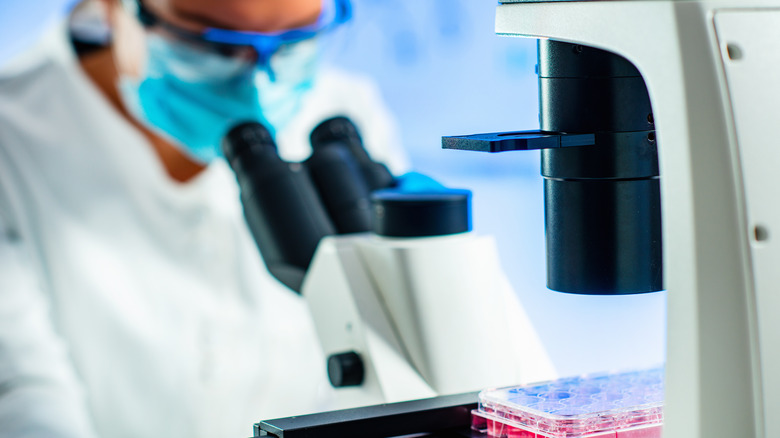Could Stem Cells Be The Answer To Curing HIV?
Stem cell procedures have come a long way since scientists first discovered a way to obtain them in 1981, according to the University of Nebraska Medical Center. Fascinatingly, researchers are looking into ways stem cells can help treat the human immunodeficiency virus (HIV). According to The Washington Post, the first case of stem cells successfully treating HIV happened in 2009, when a man, who also had leukemia, was reportedly cured of HIV after undergoing a transplant of stem cells that were resistant to the virus. According to WebMD, he died in 2020 when his leukemia returned.
In 2019, another man diagnosed with Hodgkin's lymphoma and HIV underwent the same procedure, which reportedly put his HIV into remission. WebMD reports that he is still alive. New research presented at a Conference on Retroviruses and Opportunistic Infection showed that another person has reportedly been cured of HIV, and this case is special for several reasons.
How infants' umbilical cords could provide a cure
Researchers suggest a new HIV case can provide important new clues when it comes to treating HIV. This case was the first time transplanting stem cells was successful for a multiracial, middle-aged woman. Not only that, but some of the stem cells came from an infant's umbilical cord (cord stem cells), a first use case of its kind (via The Washington Post). The woman, who was not identified, has no detectable signs of HIV 14 months after the transplant.
Researchers believe that cord stem cell transplants could be viable treatment options for people who have HIV, cancer, or other diseases, according to WebMD. It's exciting news and reflective of groundbreaking research, but experts suggest there's still a long way to go in terms of a universal cure. However, it's given many people hope that a cure for the HIV epidemic is on the horizon.


